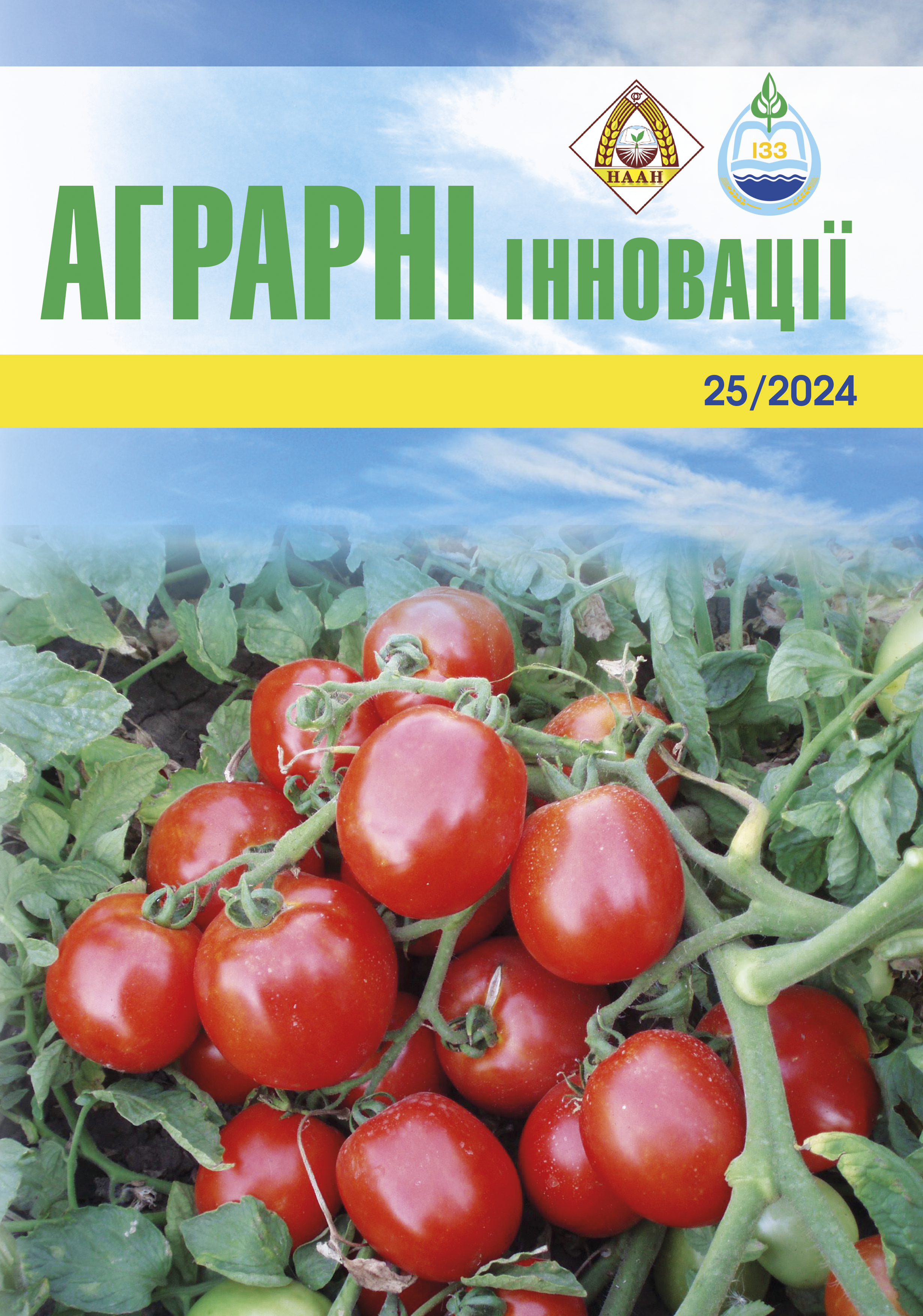Modern methods of soil remediation. Phytoremediation as a key to soil purification and ecosystem preservation
Abstract
Objective: The aim of the study is to evaluate the efficiency
and potential of phytoremediation technologies in
the restoration and purification of soils contaminated by
heavy metals and other pollutants to reduce the negative
impact on natural and anthropogenic ecosystems due to
the war in Ukraine.
Methods: The research methods included a review of
literature sources reflecting the use of modern scientific
approaches to analyze the impact of heavy metals on ecosystems
and to assess the effectiveness of phytoremediation.
Results: The literature review analysis showed that phytoremediation methods are the most promising for the conditions in Ukraine. Various laboratory and field studies were used to determine the ability of hyperaccumulator plants to absorb heavy metals from contaminated soils. The results of studies by many scientists have shown that some plants, such as Miscanthus giganteus and Pisum sativum, have high potential for use in phytoremediation measures.They can effectively absorb heavy metals and other pollutants from the soil, contributing to its purification and restoration. Additionally, the use of such plants can have additional economic benefits, for example, in the production ofbioethanol or other bioenergy resources. Conclusions: When planning phytoremediation measures, it is necessary to consider both the type of contamination and the possibility of further use of biomass. This will allow not only effective soil purification but also provide additional economic benefits and minimize health risks to the population. Phytoremediation, as a method of restoring contaminated areas, has significant potential for ecosystem preservation and sustainable agricultural development in Ukraine. The use of hyperaccumulator plants can significantly reduce the concentration of heavy metals in soils, which will contribute to the restoration of biodiversity and improve the ecological state of affected areas. Future research should focus on optimizing phytoremediation methods for different types of soils and pollutants, as well as exploring the possibilities of integrating these methodsinto general environmental restoration programs and sustainable land use practices.
References
Маслак Г., Абдул-Огли Л., Нефьодова О., Нефьодов О., Земляний О., Стрижак О. Вплив важких металів на морфологічні структури травної системи (огляд даних літератури). Перспективи та інновації науки. 2024. Вип. 2. № 36. С. 1136-1148. https://doi.org/10.52058/2786-4952-2024-2(36)-1136-1148
Alasmary Z., Hettiarachchi G. M., Roozeboom K. L., Davis L. C., Erickson L. E., Pidlisnyuk V., Stefanovska T.,
Trögl J. Phytostabilization of a contaminated military site using Miscanthus and soil amendments. Journal
of Environmental Quality. 2021. Vol. 50. № 5. P. 1220–1232. https://doi.org/10.1002/jeq2.20268
Alves J. D. C., Souza A. P. D., Pôrto M. L. A., Fontes R. L. F., Arruda J., Marques L. F. Potential of
sunflower, castor bean, common buckwheat and vetiver as lead phytoaccumulators. Revista Brasileira
de Engenharia Agrícola e Ambiental. 2016. Vol. 20. № 3. P. 243–249. https://doi.org/10.1590/1807-1929/
agriambi.v20n3p243-249
Amjad M., Iqbal M. M., Abbas G., Farooq A. B. U., Naeem M. A., Imran M., Murtaza B., Nadeem M., Jacobsen S.-E. Assessment of cadmium and lead tolerance potential of quinoa (Chenopodium quinoa Willd) and its implications for phytoremediation and human health. Environmental Geochemistry and Health. 2022. Vol. 44. № 5. P. 1487–1500. https://doi.org/10.1007/s10653-021-00826-0
Bauddh K., Singh K., Singh B., Singh R. P. Ricinus communis: A robust plant for bio-energy and phytoremediation of toxic metals from contaminated soil. Ecological Engineering. 2015. Vol. 84. P. 640–652. https://doi.org/10.1016/j.ecoleng.2015.09.0386. Boechat C. L., Carlos F. S., Nascimento C. W. A. D.,
Quadros P. D. D., Sá E. L. S. D., Camargo F. A. D. O. Bioaugmentation-assisted phytoremediation of As, Cd,
and Pb using Sorghum bicolor in a contaminated soil of an abandoned gold ore processing plant. Revista Brasileira
de Ciência Do Solo. 2020. Vol. 44. P. e0200081. https:// doi.org/10.36783/18069657rbcs20200081
Chernysh Y., Chubur V., Ablieieva I., Skvortsova P., Yakhnenko O., Skydanenko M., Plyatsuk L., & Roubík H.
Soil Contamination by Heavy Metals and Radionuclides and Related Bioremediation Techniques: A Review.
Soil Systems. 2024. Vol. 8. № 2. P. 36. https://doi. org/10.3390/soilsystems8020036
Чавлюк Г. В., Грубінко В. В., Гуменюк H. Б., Мацюк O. Б. Як війна знищує екологію України. Наукові записки
ТНПУ Серія: Біологія. 2023. Вип.82. № 4. С. 49–64. https://doi.org/10.25128/2078-2357.22.4.6
Dmytruk Y., Cherlinka V., Cherlinka L., Dent D. Soils in war and peace. International Journal of Environmental
Studies. 2023. Vol. 80. № 2. P. 380–393. https://doi.org/10.1080/00207233.2022.2152254
Domańska J., Leszczyńska D., Badora A. The Possibilities of Using Common Buckwheat in Phytoremediation of
Mineral and Organic Soils Contaminated with Cd or Pb. Agriculture. 2021. Vol. 11. № 6. P. 562. https://doi.
org/10.3390/agriculture11060562
Du J., Guo Z., Li R., Ali A., Guo D., Lahori A. H., Wang P., Liu X., Wang X., Zhang Z. Screening of Chinese mustard
(Brassica juncea L.) cultivars for the phytoremediation of Cd and Zn based on the plant physiological mechanisms.
Environmental Pollution. 2020. Vol. 261. P. 114213. https://doi.org/10.1016/j.envpol.2020.114213






